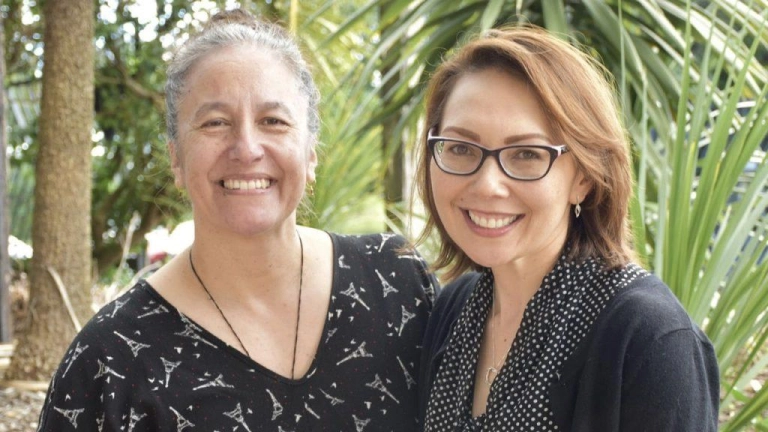Heart Disease Costs NZ - Solutions Are Already Here
Heart disease remains Aotearoa, New Zealand’s biggest killer, costing a minimum $13.8 billion in healthcare, lost productivity and lives cut short.
The Kia Manawanui Cardiac Impact Report lays bare the sheer scale of heart disease and the inequities Māori and Pacific Peoples continue to face.
The estimated, for the first time, the national cost of heart disease. Earlier this year, regional research from the New Zealand Institute of Economic Research (NZIER) in Hawke’s Bay showed that cardiovascular disease among working-age Māori alone drains an estimated $32 million every year from the regional economy.
These figures highlight that heart disease is not just a health crisis, but an economic and productivity crisis says Dr Karen Brewer, Pūtahi Manawa Co-Director Māori.
The Kia Manawanui Cardiac Impact Report puts new numbers to an enduring and well-known fact — the burden of heart disease falls disproportionately on Māori and Pacific peoples, who are more likely to develop heart disease earlier, experience more severe illness, and die younger than others in New Zealand.
Dr Brewer says that the inequities result from systemic barriers to prevention, early detection, treatment, and a representative workforce - but they can be changed.
"These unacceptable inequities justify the need for sustained differential treatment, with more resources put into the areas of greatest need, that is, based on ethnicity, geography, and deprivation."
This approach directly aligns with the recommendations in both the Cardiac Impact Report and the NZIER's Hawke's Bay findings: that targeted, equity-focused investment in prevention will save lives and reduce the enormous economic burden of cardiovascular disease.

Professor Julian Paton, founding Co-Director of Pūtahi Manawa, says that the report doesn't paint a new picture, and Pūtahi Manawa's model directly answers the recommendation to implement equity-focused funding models to resource regions and populations with the highest heart disease burden.
"Pūtahi Manawa demonstrates how Māori, Pacific and non-Māori and non-Pacific are working together effectively to improve equity in heart health".
Pūtahi Manawa | Healthy Hearts for Aotearoa New Zealand is one of ten Centres of Research Excellence (CoRE). Government-funded to the tune of $40 million over 8 years, CoREs are inter-organisational, premier research networks that focus on areas of strategic importance for Aotearoa New Zealand.
Pūtahi Manawa members work across disciplines, sectors and come from the communities most impacted by heart disease, ensuring that research reflects lived realities and can be implemented effectively where it's needed most.
Solutions Already in Action
Pūtahi Manawa researchers are already delivering results:
- Preventative hauora programmes rooted in tikanga and whānau health models, designed to reduce the onset of cardiovascular disease and prevent repeat hospitalisations.
- Pacific researchers lead culturally grounded education and screening initiatives in partnership with churches, schools, and local health providers.
- Community outreach at large-scale events, working with Māori and Pacific school-aged programmes, funding undergraduate summer programmes, postgraduate study, and fellowships for heart health equity, close relationships with indigenous heart health workforce networks nationally and globally, all aid in developing the Māori and Pacific workforce and the wellbeing of that workforce.
- Research to identify and scale interventions that cut acute hospitalisations and heart failure readmissions, improve long-term outcomes, and translate into savings for the health sector and the broader economy.
These are not abstract concepts — they are proven approaches that can be scaled nationally and adapted to regional contexts like Hawke's Bay, Tairāwhiti, and those with the greatest need for the biggest impact.

The Workforce Issue
The Kia Manawanui report also identified significant gaps and subpar staffing levels in the cardiac workforce. Delving deeper than this, research released in 2024, partly funded by Pūtahi Manawa, and led by Dr Corina Grey and Professor Matire Harwood from the University of Auckland, revealed the positive impact of treatment given and received by people of the same background.
"Māori and Pacific whānau spoke about the positive impact Māori and Pacific staff had on their healthcare experience just by being there and being themselves”, said Dr Brewer, who was on the research team with Dr Grey and Professor Harwood.
Now a part of the Pūtahi Manawa Directorship, Dr Brewer is part of a bigger force to build and retain tomorrow's Māori and Pacific heart healthcare workforce.
Pūtahi Manawa saw 41 Māori and Pacific students through their two summer research programmes, and has had a record number of applications for this year's cohort, some of whom are returning from last year. Many students said that they had never considered research before, and the programme allows them to gain confidence and skills to pursue PhDs and make a significant impact in their communities.
Where to From Here
The Cardiac Impact Report has put a dollar amount on what we already know, says Professor Paton.
"By investing in Māori and Pacific-led research, prevention, and community-based solutions, Aotearoa can save lives, close the equity gap in cardiovascular health and boost economic productivity in regions most affected. The solutions are already here. It's time to scale them."

